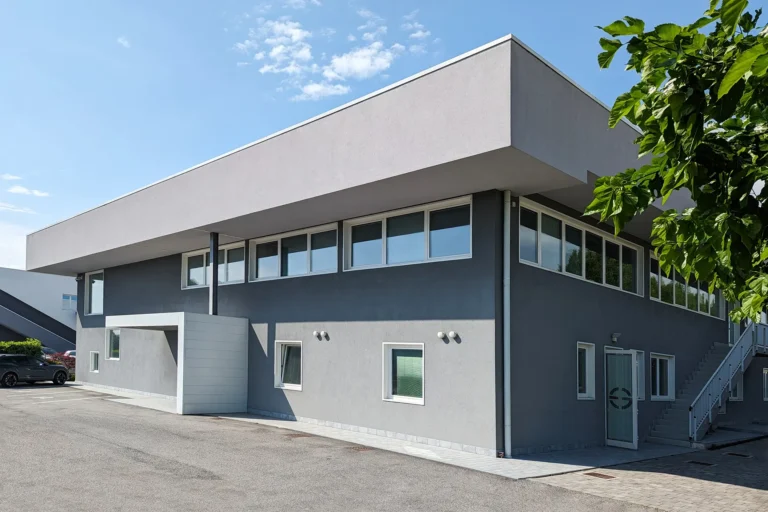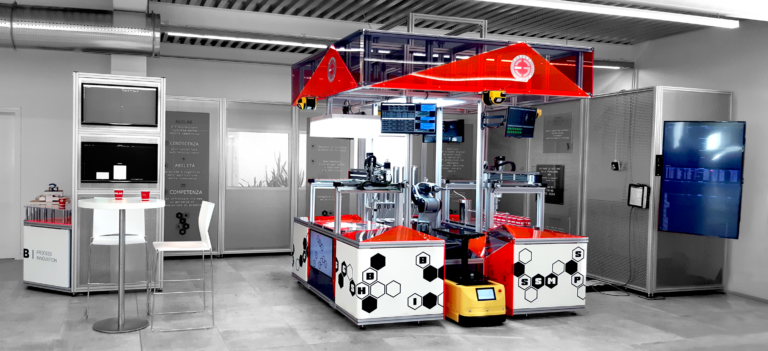Process Simulation systems
Customised development of process simulation software for lines, plants and logistics
Eureka System is experienced in developing custom Process Simulation systems using Python and Unity (C#, C++). Such systems are customised in their predictive functionality and are used to foresee the behaviour of one or more automatic entities operating in a specific production context.
Whether one wishes to develop a new plant or improve an existing production process, process simulation enables manufacturing companies to explore possible production scenarios, analyse the impact of any process changes and identify possible areas for improvement and the causes of inefficiencies.
Simulation of the behaviour of specific machines or automated plants:
Simulation systems that are specifically developed to study and predict the behaviour of a single automatic machine in different hypothetical contexts to improve its functionalities and performances.
Simulation of complete processes:
Simulation systems that are developed on commission to replicate and predict the behaviour of plants, plant sections and production lines in order to maintain a sustainable competitive advantage and achieve greater productivity, monitoring capabilities and competitiveness.
AMR fleet simulation for logistics
Simulation systems designed to evaluate various aspects of the navigation and efficiency levels of an AMR fleet, as well as to simulate various possible layouts and alternative logistics flows in a virtual environment.

Simulation advantages
- Study of the dynamic unfolding of a process and observation of the behaviour of the system evolving over time.
- Excellent degree of realism to allow analysis of results and real product or process optimisation.
- Increased production flexibility, with a related decrease in Lead Time and Time to Market.
- Conversion of data into statistics reports to support decision-making in Management and Logistics.
- Reduction of time and costs related to the analysis of alternatives by simulating different scenarios in a way that does not interfere with existing operations.
- Functional verification of a process with identification of critical situations, bottlenecks or anomalies.
- Logistics simulation to support line layout design and warehouse dimensioning.
Process Simulation
Customised Process Simulation Systems, thoroughly designed with the required characteristics and having significant predictive capabilities.
When it comes to production lines and plants, prototyping can be cost prohibitive and can significantly delay the commissioning of the project. Process simulation offers an excellent alternative for performing experiments, studies and analyses, all within a realistic and highly dynamic virtual environment.
Using a dynamic virtual model, rather than a pure mathematical calculation or a physical prototype, can bring benefits along the entire value chain.
By carefully designing and developing the simulation environment, these systems can simulate and analyse entire production processes including individual operations, system interaction points, supply chain and logistics. These software tools simulate factory environments such as manufacturing lines, automation solutions, logistics tasks or other production processes, while varying process parameters, including Takt Time, overall throughput, volumes, staffing, layout and more.
Some examples of the functionalities that a custom-developed process simulation system can have:
Rapid creation, execution and modification of simulations with different variables and different production, architectural or structural constraints.
Total control of the simulation environment and the physical parameters involved: mass, initial speed, force, torque, acceleration, etc.
Identification and reduction of bottlenecks in order to optimise line layout and increase production volumes.
Simulation of contact events, bending moment, collisions, friction, etc.
Ability to run, stop, pause and edit individual simulation steps.
Recording of simulation data and creation of graphs, images or video files for later playback.
Logistic simulation for AMRs
Simulation can be a major asset in managing complex logistical and organisational flows and optimising processing and movement workloads. By exploiting such simulation systems, problems can be approached empirically and possible changes to the layout of logistics routes can be evaluated within a realistic, dynamic and interactive simulation environment.
Simulation systems for logistics are strongly linked to environmental variables and the dynamics of the real process, so they are always developed following a preliminary analysis of the actual process and environment one wishes to simulate. These systems make it possible to observe the behaviour of different objects and workflows evolving over time, thus reducing the time and costs involved in analysing alternatives. Thanks to customised realistic models and studied event simulators, it is possible to understand how best to structure one’s logistics flows and how to cope with determined architectural or structural constraints.
One of the most useful applications for these simulation systems is related to the world of AMRs (Autonomous Mobile Robots). Thanks to this technology, in fact, it is possible to simulate the behaviour of an AMR fleet deployed in a given production or logistical context while varying various parameters, such as the number and function of the AMRs belonging to the fleet, their operating parameters, the number or positioning of recharging stations and interaction points with machines and operators. Simulation therefore makes it possible to assess various aspects related to the navigation and efficiency of the fleet, as well as to simulate different possible layouts and alternative logistics flows in a virtual environment.
A few examples of analyses that can be carried out using these simulations:
Warehouse dimensioning and simulation of logistics flows.
Dimensioning of interline accumulations in order to reduce the waiting time of materials.
Verification of the movement logics of the transport systems (junctions, confluences, traffic lights).
Management improvement of automatic and manual backup stations.
Analysis of the energy consumption of the AMR fleet.
Identification of improvement areas for Lead Time optimisation.
Cycle Time analysis, particularly useful in the case of complex layouts or parallel production lines.
Process simulation in 6 steps
1. Process mapping
Creating a schematic visual representation of the process, including all flows, operations and decision points. This representation is often developed using workflow diagrams.
2. Data gathering
Collection of relevant data regarding the process to be simulated, e.g. duration and frequency of operations, distribution of resources, and costs. This data is used to define basic measurement metrics and environmental parameters required for a realistic simulation model.
3. Model development
Creation of a mathematical or computational model of the process based on the process map and the collected data. The model must accurately represent the relationships between operations, resources and decision points within the process.
4. Software development
Development of the interface that will allow the user to interact with the simulator. It can be developed using different programming languages, can use 2D or 3D objects and have varying degrees of graphical complexity.
5. Running simulations
Use of the model to simulate various scenarios, which may involve changing the process flow, the distribution of resources, or the duration of operations. This step helps to identify potential bottlenecks, inefficiencies and areas for improvement.
6. Analysis and optimisation
Analysis of simulation results to identify trends, critical issues and improvement areas. Based on the results, the actual process is adjusted to optimise its performance and further simulations are carried out to validate the proposed changes.
Process simulation
Our solutions are consistently tailored to meet the unique needs of businesses. We don’t believe in a ‘one-size-fits-all’ approach, as we understand that each company possesses its own distinctive production intricacies that define its individuality.
If you're looking to bring innovation to your company while preserving your established production methods, we're here to assist you
Thanks to our vast experience in the field of automation, we apply skills developed in different industries to carefully study the customised solution that best suits your business needs. First, we will thoroughly analyse your production processes, from the Automation level up to Management, to fully understand your business dynamics and start developing a tailor-made solution that integrates seamlessly with your existing workflows, methods and technologies.





